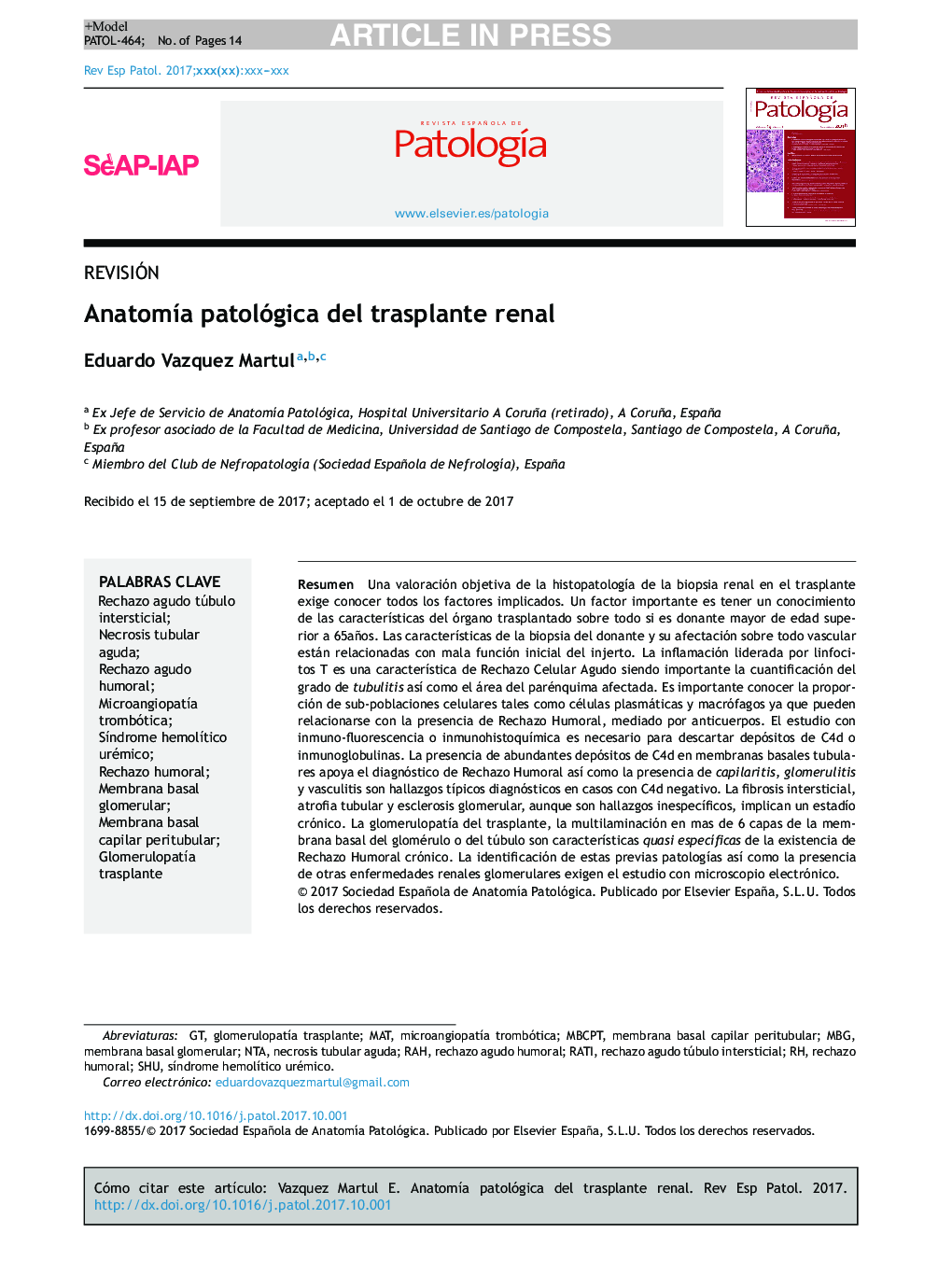| Article ID | Journal | Published Year | Pages | File Type |
|---|---|---|---|---|
| 8807985 | Revista Española de Patología | 2018 | 14 Pages |
Abstract
In order to make an objective assessment of the histopathology of a renal biopsy during a kidney transplant, all the various elements involved in the process must be understood. It is important to know the characteristics of the donor organ, especially if the donor is older than 65. The histopathological features of the donor biopsy, especially its vascular status, are often related to an initial poor function of the transplanted kidney. The T lymphocyte inflammatory response is characteristic in acute cellular rejection; the degree of tubulitis, together with the amount of affected parenchyme, are important factors. The proportion of cellular sub-populations, such as plasma cells and macrophages, is also important, as they can be related to antibody-mediated humoral rejection. Immunofluorescent or immunohistochemical studies are necessary to rule out C4d deposits or immunogloblulins. The presence of abundant deposits of C4d in tubular basement membranes supports a diagnosis of humoral rejection, as does the presence of capillaritis, glomerulitis which, together with vasculitis, are typical diagnostic findings in C4d negative cases. Interstitial fibrosis, tubular atrophy and glomerular sclerosis, although non-specific, imply a chronic phase. Transplant glomerulopathy and multilamination in more than 6 layers of the tubular and glomerular basement membranes are quasi-specific characteristics of chronic humoral rejection. Electron microscopy is essential to identify of these pathologies as well as to demonstrate the presence of other glomerular renal diseases.
Keywords
Related Topics
Health Sciences
Medicine and Dentistry
Pathology and Medical Technology
Authors
Eduardo Vazquez Martul,
